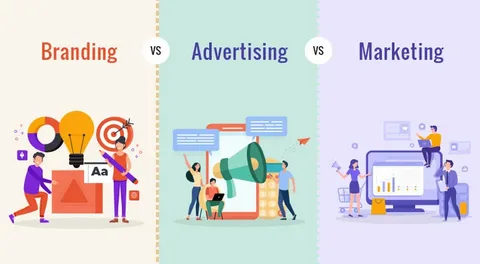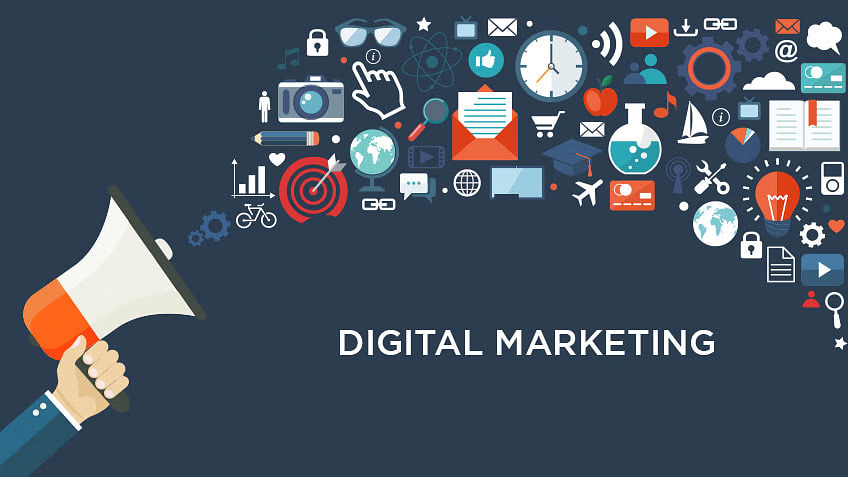In today’s interconnected, fast-paced world, technology is not just a tool—it is a foundational pillar that supports almost every aspect of modern society. From how we communicate, work, learn, and receive healthcare, to how we govern, entertain, and solve global challenges, technology plays an ever-expanding role. Its integration into our daily lives is so complete that it often goes unnoticed—yet its influence shapes decisions, economies, and human behavior.
In this blog post, we will explore the multifaceted role of technology in modern society. Through practical examples and in-depth analysis, we’ll see how innovation has become both a driver of progress and a mirror reflecting our values, priorities, and future possibilities.
Technology and Communication Shrinking the World
One of the most profound impacts of technology is on communication. Digital platforms, smartphones, and the internet have revolutionized how people connect across distances. Social media apps like WhatsApp, Instagram, and Twitter have replaced traditional methods of keeping in touch. Businesses use video conferencing tools like Zoom and Microsoft Teams to hold meetings with participants across continents in real-time.
Technology has enabled real-time global interaction, allowing for faster news dissemination, global activism, remote work, and online communities. For instance, during the COVID-19 pandemic, communication technology was vital in maintaining continuity of life—people attended weddings, funerals, and birthdays virtually. This shift not only illustrates technology’s role in enhancing human connection but also demonstrates its power to maintain social bonds during crises.
Technology in Education Breaking Barriers
Education is another area where technology has transformed traditional systems. Online learning platforms like Coursera, Khan Academy, and Google Classroom have democratized access to education. Now, anyone with an internet connection can learn from top universities around the world. In developing countries, EdTech solutions are helping students gain access to resources that were previously unavailable due to geography or cost.
Interactive learning through Augmented Reality (AR) and Virtual Reality (VR) is reshaping how subjects are taught. Imagine learning anatomy by exploring a 3D model of the human body or understanding physics through immersive simulations. Technology makes education more inclusive, flexible, and adaptive, catering to students with different learning styles and needs.
Example: In India, the government’s “DIKSHA” platform delivers digital learning resources to millions of students in multiple languages—bridging gaps caused by socioeconomic differences.
Technology in Healthcare Saving Lives and Enhancing Well-being
Modern healthcare would not exist without technology. From life-saving surgical equipment and diagnostic tools like MRI machines to wearable health monitors and telemedicine platforms, technology has revolutionized how healthcare is delivered.
Today, patients can consult doctors through their smartphones. AI algorithms analyze medical records to detect diseases early. Wearables like Fitbit or Apple Watch help individuals monitor heart rate, sleep, and physical activity in real-time.
Example: During the COVID-19 pandemic, countries like South Korea and Singapore used contact tracing apps and AI-powered diagnostics to control the spread effectively. In rural areas, telemedicine enables patients to receive expert advice without traveling long distances.
Technology also plays a critical role in drug discovery. AI models now help pharmaceutical companies simulate chemical reactions, speeding up the process of finding cures for complex diseases.
Technology and Economic Growth Driving Innovation and Job Creation
Technology is a key driver of global economic development. It enables businesses to operate efficiently, create new products, and reach wider markets. E-commerce platforms like Amazon, Shopify, and Alibaba have revolutionized retail by eliminating geographical barriers and offering global logistics solutions.
Digital banking, mobile wallets, and blockchain are transforming how we manage and move money. Fintech startups are enabling financial inclusion for the unbanked population in Africa and Southeast Asia through simple mobile apps.
Meanwhile, automation and Artificial Intelligence (AI) are changing the job landscape. While some fear job losses due to automation, new sectors are emerging—like data science, cloud computing, digital marketing, and cybersecurity. The role of technology in reshaping the workforce is undeniable, with lifelong learning and digital skills becoming essential.
Example: Estonia’s e-Residency program allows entrepreneurs from anywhere in the world to start and manage a digital business entirely online—proving how tech-driven governance can stimulate innovation.
Technology in Governance and Public Services
Governments around the world are adopting digital solutions to improve transparency, efficiency, and citizen engagement. E-governance platforms allow citizens to access public services such as license renewals, tax filing, and birth registrations without visiting a government office.
Big data helps in policy formulation by analyzing population trends, health statistics, and economic indicators. Smart cities leverage IoT to optimize energy consumption, reduce traffic congestion, and manage public utilities in real time.
Example: In India, the Aadhaar biometric identification system has helped streamline the distribution of welfare subsidies, reduce fraud, and ensure that benefits reach the intended recipients.
Similarly, open data initiatives in the UK and Canada allow citizens to access government databases, fostering accountability and civic participation.
Technology in Entertainment Redefining Creativity and Consumption
The entertainment industry has undergone a complete transformation, driven by digital platforms, streaming services, and interactive media. Services like Netflix, YouTube, and Spotify allow users to consume content anytime, anywhere.
Artificial Intelligence is even helping in content creation. AI can generate music, write stories, or enhance visual effects in films. Video games have become more immersive with VR and AI-powered characters that adapt to player behavior.
Social media has also made it possible for anyone to become a content creator. Platforms like TikTok and Instagram Reels have created new forms of entertainment and even new career paths as influencers or digital artists.
Example: Virtual concerts by artists like Travis Scott and Ariana Grande held inside video games like Fortnite drew millions of viewers—blurring the line between digital and real-world experiences.
Technology and Social Justice Empowering the Voiceless
Technology can be a powerful force for equity and social justice. Social media platforms have become spaces for activism, awareness, and advocacy. Hashtags like #BlackLivesMatter and #MeToo sparked global movements, holding institutions accountable and giving voice to marginalized communities.
Digital tools are being used to monitor human rights abuses, document war crimes, and amplify local voices. NGOs and international bodies rely on technology for crisis response, relief distribution, and awareness campaigns.
Example: In remote African villages, solar-powered internet kits allow communities to access legal information, report crimes, and educate themselves on their rights—empowering people who were once excluded from digital discourse.
Technology and Environmental Sustainability
With the world facing an environmental crisis, technology is emerging as a crucial part of the solution. Renewable energy technologies such as solar, wind, and hydro are becoming more cost-effective and widespread, reducing dependence on fossil fuels.
Smart agriculture tools use AI and sensors to optimize water usage, reduce pesticide application, and increase crop yields—ensuring food security while preserving natural resources.
Climate scientists use data modeling and AI to predict weather patterns and track environmental changes. Startups are developing carbon capture technologies and biodegradable materials to combat plastic pollution.
Example: Electric vehicles (EVs), led by companies like Tesla, are rapidly becoming mainstream. Combined with a smart grid, they could drastically cut greenhouse gas emissions in the transportation sector.
Technology in Transportation Smarter, Faster, and Greener
Transportation is one of the most visible beneficiaries of technological advancement. GPS navigation, ride-sharing apps, autonomous vehicles, and electric mobility are redefining how people and goods move.
Autonomous drones are being used for deliveries, surveillance, and even emergency medical supplies. High-speed trains, maglev systems, and innovations like the Hyperloop could redefine intercity travel in the near future.
Example: Uber and Lyft revolutionized the taxi industry, while apps like Google Maps have become indispensable tools for urban navigation.
Technology is also being used to optimize public transportation. Real-time tracking, contactless ticketing, and AI-powered route planning are making travel more efficient and accessible.
Ethical Considerations and Digital Responsibility
While technology offers immense benefits, it also brings challenges—especially concerning privacy, security, and ethical use. Issues such as data breaches, misinformation, surveillance, and algorithmic bias have raised concerns about the darker side of digital progress.
For instance, AI facial recognition systems have been criticized for racial bias and invasion of privacy. Social media algorithms that favor sensational content have contributed to political polarization and the spread of fake news.
As we move forward, digital literacy, ethical standards, and robust regulations will be essential to ensure that technology serves humanity without harming it.
Conclusion
Technology is not inherently good or bad—it is a tool. Its impact on modern society depends on how we use it. In the hands of innovators, educators, healthcare workers, activists, and entrepreneurs, it becomes a force for good. But in the absence of ethical guidance and responsible use, it can deepen inequalities, spread misinformation, and erode privacy.
The role of technology in modern society is both transformational and transitional. It transforms how we think, live, and interact—but it also transitions us toward a future that must be built thoughtfully and inclusively. As we look ahead, embracing innovation while maintaining our humanity will be key to ensuring that technology enriches life rather than diminishes it.
Whether you’re a student, a policymaker, a business owner, or an ordinary citizen, understanding the evolving role of technology is not just beneficial—it’s essential. Because in the story of modern society, technology is not just a character—it is the co-author of our shared future.









